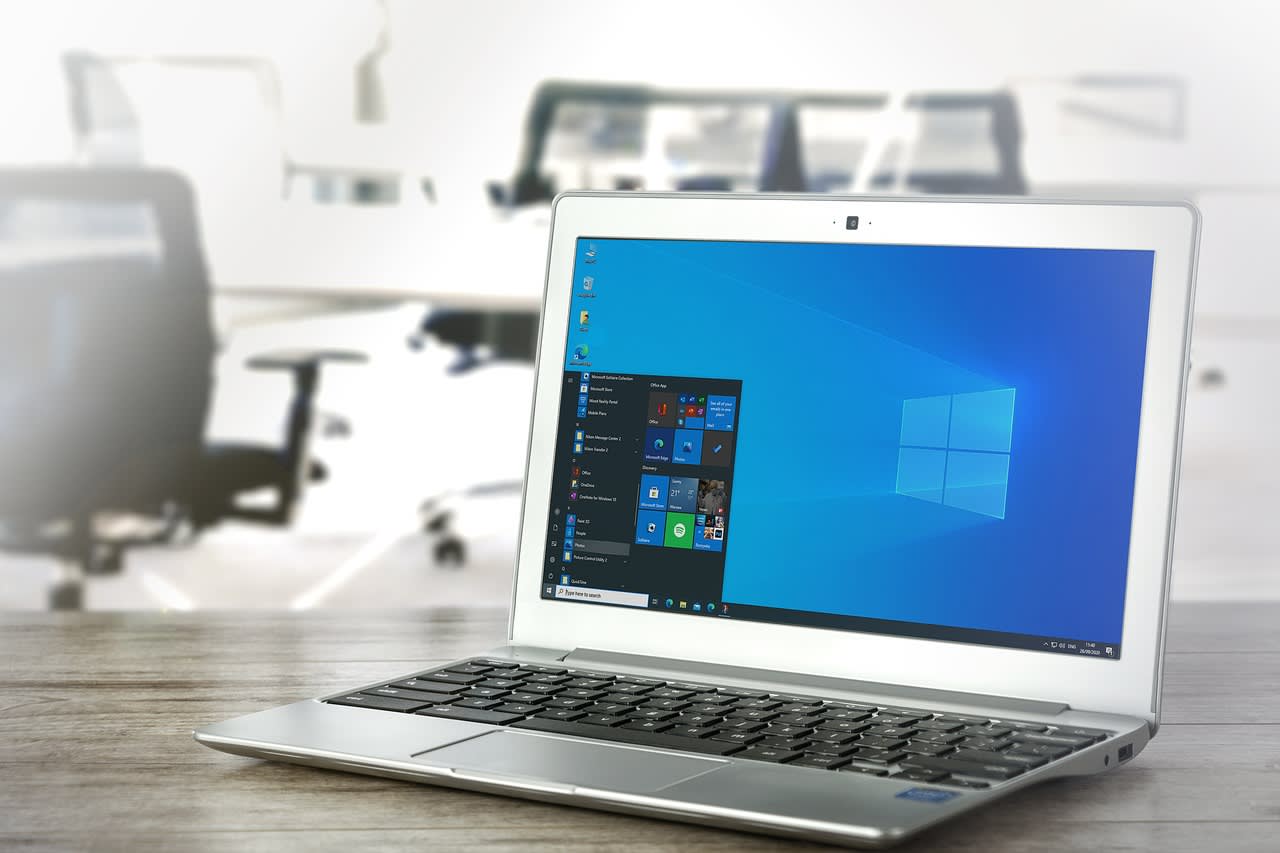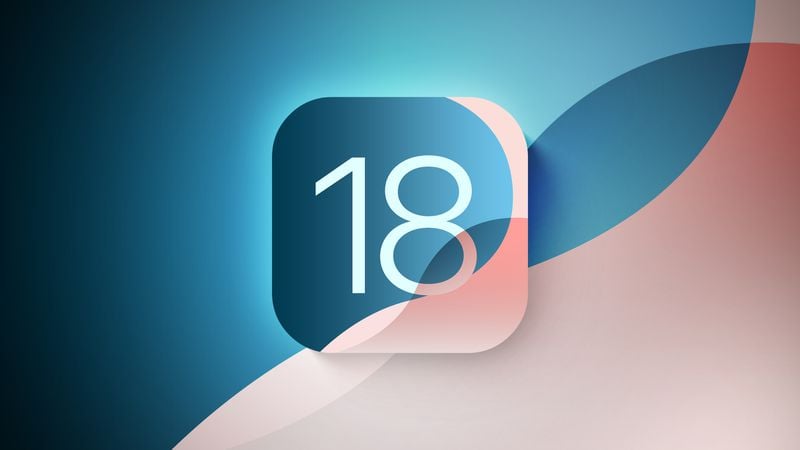July 2024 Tech Updates- What You Need To Know
- With Code Example
- July 30, 2024
Stay Ahead of the Game: July 2024 Tech Updates You Can't Afford to Miss
Windows Outage:


A large-scale outage that affected Windows systems globally caused serious disruptions across various sectors, including aviation, finance, and healthcare. The incident, which began on July 19, 2024, was linked to a malfunctioning software update from CrowdStrike, a cybersecurity firm whose products are deeply integrated with Microsoft Windows. This update led to significant connectivity failures in Microsoft’s Azure cloud services, resulting in widespread IT issues.
Table of Contents
Impact of the Outage
The outage had a cascading effect on numerous critical services worldwide:
Aviation Sector: More than 4,000 flights were canceled globally, with major airlines such as American Airlines, Delta, and United grounding flights. Airports in Germany, Spain, and other countries reported disruptions, with automated boarding scanners going offline and check-ins delayed or halted entirely. In India, airlines like Indigo and Akasa Air faced severe operational challenges, forcing them to revert to manual processes for check-ins and bookings.
Financial Services: Banks and stock exchanges experienced significant disruptions. The London Stock Exchange reported issues with its news service, while many banks faced operational challenges due to the outage. However, the Reserve Bank of India noted that critical systems at most banks remained insulated from the incident.
Healthcare Services: In the UK, the NHS booking system went offline, affecting patient care and appointment scheduling. Emergency services in Alaska also reported disruptions, with 911 lines experiencing outages due to the broader IT issues.
Media and Broadcasting: Major broadcasters, including Sky News, were unable to transmit live programming, leading to interruptions in news coverage. This incident highlighted the vulnerability of media outlets to IT failures.
Challenges for IT Administrators
The outage underscored the difficulties that IT administrators face when communicating technical issues to non-technical management. As systems went offline, many administrators struggled to explain the complexities of the situation, particularly regarding the root causes linked to the CrowdStrike update. The “blue screen of death,” a common Windows error indicating a serious system failure, became a widespread issue as users attempted to log into their computers.
Response and Recovery Efforts
In response to the outage, Microsoft and CrowdStrike worked to identify and rectify the issues. Microsoft confirmed that the outage stemmed from a configuration change in its Azure backend, which was exacerbated by the faulty CrowdStrike update. As the situation unfolded, various governments and organizations implemented manual backup systems to maintain operational continuity, particularly in critical sectors like aviation.Union IT Minister Ashwini Vaishnaw of India stated that the Ministry of Electronics and IT was in contact with Microsoft and coordinating with impacted entities to restore services. The Indian Computer Emergency Response Team (Cert-In) also issued advisories to help organizations navigate the crisis.This incident serves as a stark reminder of the interconnectedness of modern IT systems and the potential for widespread disruption when critical software fails. The challenges faced by IT teams in communicating these issues to management highlight the need for better understanding and collaboration between technical and non-technical stakeholders.
iOS 18 Features:

Apple is set to introduce iOS 18, which will feature significant enhancements aimed at improving the user experience, particularly regarding the recovery of lost photos and videos. One of the standout additions is the new “Recovered” album in the Photos app, designed to help users retrieve images and videos that may have been lost or damaged due to various issues, such as database corruption or improper saving by third-party applications.
Key Features of iOS 18
Enhanced Photo Recovery
The “Recovered” album will be accessible through the Utilities section of the Photos app. It will automatically display any photos or videos that are not part of the user’s main Photos Library but are recoverable. This feature is particularly beneficial for users who have experienced issues where images appear to be missing due to software errors or storage problems.
To access the “Recovered” album, users can follow these steps:
- Open the Photos app and tap on the Albums icon.
- Scroll down to find the Utilities menu.
- Tap on the “Recovered” option, where they may need to authenticate using Face ID or Touch ID.
- Users can then select individual images or videos to either restore them to their library or permanently delete them.
This functionality aims to address previous concerns where deleted photos occasionally reappeared due to bugs in earlier iOS versions, such as iOS 17.5, which had issues related to database corruption. With the introduction of the “Recovered” album, Apple aims to provide a more reliable way for users to manage their photo libraries and ensure that lost content can be retrieved efficiently.
Improvements to Flashlight Functionality
In addition to the photo recovery feature, iOS 18 will also bring improvements to the iPhone’s flashlight functionality. While specific details on these enhancements are still emerging, users can expect increased customization options and potentially new modes that enhance the usability of the flashlight in various scenarios.
Availability and Installation
The public beta of iOS 18 is currently available, allowing users to test these new features ahead of the full release expected in September 2024. Users interested in trying out the beta can install it by navigating to Settings > General > Software Update on compatible iPhone models dating back to the iPhone XS.
Overall, iOS 18 represents a significant step forward in user experience, particularly for those who have faced challenges with photo management on their devices. The new features not only enhance functionality but also reflect Apple’s commitment to addressing user feedback and improving system reliability.
AI Developments:

OpenAI is reportedly advancing its capabilities with a new initiative called Project Strawberry, aimed at developing AI systems that can conduct research autonomously. This project seeks to enhance the reasoning abilities of AI models, enabling them to not only answer questions but also navigate the internet and perform in-depth research independently. Internal documents suggest that Strawberry is designed to tackle complex tasks that require planning and multi-step problem-solving, which have traditionally been challenging for AI systems.
Key Features of Project Strawberry
Autonomous Research: The primary goal of Project Strawberry is to create AI that can autonomously conduct research. This includes the ability to search online for information, gather data, and synthesize findings without human intervention. This capability represents a significant leap beyond current AI models, which primarily rely on pre-existing datasets and programmed responses.
Enhanced Reasoning Skills: OpenAI aims to imbue its AI models with advanced reasoning capabilities. This involves training models to perform long-horizon tasks, which require a series of planned actions over extended periods. Such skills could dramatically improve the AI’s ability to engage in complex problem-solving and scientific inquiry.
Deep Research Dataset: The project is reportedly developing a specialized dataset for training these models, focusing on deep research tasks. While the specifics of this dataset remain undisclosed, it is expected to enhance the AI’s ability to understand and analyze information in a more human-like manner.
Fine-Tuning and Self-Improvement: Strawberry is believed to incorporate techniques similar to the “Self-Taught Reasoner” (STaR) method developed at Stanford, which allows AI models to generate their own training data and improve their reasoning capabilities iteratively. This process of recursive self-improvement could potentially lead to significant advancements in AI intelligence.
Context and Implications
The development of Project Strawberry aligns with OpenAI’s broader mission to create artificial general intelligence (AGI) that benefits humanity. The potential for AI to conduct independent research could revolutionize fields such as scientific discovery, where AI could identify gaps in knowledge, formulate hypotheses, and accelerate the pace of innovation.
Meanwhile, Google has launched its Gemini 1.5 Flash AI model, which aims to enhance its chatbot services. This model is part of Google’s ongoing efforts to improve conversational AI and provide more sophisticated interactions for users.
In addition, Apple is expected to adopt new voluntary AI safeguards as proposed by the White House. These measures are part of a broader initiative to ensure the ethical development and deployment of AI technologies, reflecting growing concerns about the implications of advanced AI systems.
Together, these developments highlight a rapidly evolving landscape in AI research and deployment, with significant implications for various sectors and the future of technology.
OnePlus Nord 4:

OnePlus has officially launched the Nord 4 smartphone, which features a sleek all-metal unibody design and a range of advanced AI capabilities. The launch event took place on July 16, 2024, in Milan, Italy, and the device will be available for purchase in India starting August 2, 2024.
OnePlus Nord 4 Highlights
Design and Build: The Nord 4 is touted as the only metal unibody 5G smartphone in its category, providing both durability and a premium feel. It measures just 0.80 cm in thickness, making it the slimmest model in the Nord series.
Specifications:
- Processor: Powered by the Qualcomm Snapdragon 7 Plus Gen 3 SoC, the Nord 4 promises high performance and efficiency.
- Display: It features a 6.74-inch 1.5K AMOLED display with a 120Hz refresh rate, ensuring smooth visuals.
- Camera: The smartphone includes a dual-camera setup on the rear, with a 50-megapixel main sensor equipped with optical image stabilization (OIS) and an 8MP ultra-wide sensor. The front camera is a 16 MP sensor, ideal for selfies.
- Battery: A robust 5,500 mAh battery supports 100W SUPERVOOC wired charging, allowing for rapid power replenishment.
AI Features: The Nord 4 is integrated with various AI functionalities for media editing and productivity. Notable features include:
- AI Best Face: Enhances group photos by recognizing faces and expressions.
- AI Eraser: Removes unwanted elements from images.
- AI Clear Face: Improves facial details in photos.
- Productivity Tools: Includes features like AI Speak, AI Summarize, and AI Writer, which will be rolled out via firmware updates later in the year.
Pricing and Availability: The Nord 4 will be available in three configurations:
- 8GB RAM + 128GB storage: ₹29,999
- 8GB RAM + 256GB storage: ₹32,999
- 12GB RAM + 256GB storage: ₹35,999
Customers can benefit from introductory offers, including discounts on credit card purchases.
Other Notable Launches
In addition to the OnePlus Nord 4, Lenovo has introduced the Xiaoxin Pad Pro 12.7, which is powered by the Dimensity 8300 SoC. This tablet is designed for high performance and productivity, catering to users looking for a versatile device.
Xiaomi is also preparing to launch two new models, the Mix Flip and Phone 2a Plus, further expanding its lineup in the competitive smartphone market. These upcoming devices are anticipated to feature innovative designs and advanced specifications, aligning with Xiaomi’s reputation for delivering value-packed products.
Overall, the launch of the OnePlus Nord 4, alongside new offerings from Lenovo and Xiaomi, highlights a vibrant month in the tech industry, with manufacturers focusing on integrating advanced technology and AI capabilities into their devices.
AMD Ryzen 9000 CPUs:
AMD has confirmed that its highly anticipated Ryzen 9000 CPUs will be available for purchase starting July 31, 2024. This new lineup, based on the Zen 5 architecture, includes four models: the Ryzen 9 9950X, Ryzen 9 9900X, Ryzen 7 9700X, and Ryzen 5 9600X. These processors are designed to fit into the existing AM5 socket, ensuring compatibility with current motherboards.
Pricing Overview
While AMD has not officially released pricing details, several European retailers have begun listing the CPUs with provisional prices. The following prices have been observed:
- Ryzen 5 9600X: Approximately €350.60 (~$382)
- Ryzen 7 9700X: Approximately €454.13 (~$495)
- Ryzen 9 9900X: Approximately €567.42 (~$618)
These prices include VAT, which is around 20% in France, and may not reflect AMD’s final recommended retail prices (RRP). For instance, after adjusting for VAT, the expected prices could be around $300 for the Ryzen 5 9600X, $400 for the Ryzen 7 9700X, and $490-$500 for the Ryzen 9 9900X.
Performance Expectations
The Ryzen 9000 series is expected to deliver significant performance improvements over its predecessors. AMD claims an average IPC (instructions per clock) uplift of approximately 16% compared to the Ryzen 7000 series. Additionally, the Ryzen 9700X and 9600X will feature a reduced thermal design power (TDP) of 65W, down from 105W for their predecessors, which may enhance power efficiency and thermal management.
Market Positioning
AMD appears to be adopting a more aggressive pricing strategy with the Ryzen 9000 series, aiming to avoid the high launch prices that characterized the previous generation. This approach is likely a response to consumer feedback and market conditions, as the company seeks to attract both gamers and professionals looking for high-performance CPUs at competitive prices.
As the launch date approaches, retailers are expected to finalize their pricing and availability details. Potential buyers are advised to monitor the situation closely, as prices may fluctuate based on demand and stock levels following the official release.
Samsung Galaxy Ring:
Samsung has officially launched the Galaxy Ring, its latest wearable device, during the Unpacked event on July 10, 2024. This smart ring is designed to cater to health-conscious consumers, offering a range of advanced health-tracking features that have generated considerable interest ahead of its release.
Key Features of the Samsung Galaxy Ring
Health Tracking Capabilities:
- The Galaxy Ring is equipped with multiple sensors, including a photoplethysmography (PPG) sensor for heart rate monitoring, a skin temperature sensor, and an accelerometer. These sensors allow the device to track various health metrics such as heart rate, respiratory rate, sleep patterns, and movement during sleep.
- Users can receive a “Vitality Score,” which assesses their physical and mental readiness based on collected data, helping them gauge productivity levels for the day.
Sleep Monitoring:
- The ring features a comprehensive sleep tracking system, providing insights into sleep quality, including sleep latency, movements during sleep, and snoring analysis. It generates a Sleep Score to help users understand their sleep patterns better.
Battery Life and Design:
- The Galaxy Ring boasts impressive battery life, with claims of up to seven days on a single charge, depending on the size. It is available in nine sizes (ranging from 5 to 13) and comes in three colors: Titanium Black, Titanium Silver, and Titanium Gold.
- The device is designed to be water-resistant with an IP68 rating, making it suitable for various daily activities.
Integration with Samsung Health:
- The Galaxy Ring works seamlessly with the Samsung Health app, allowing users to access detailed health reports and receive personalized wellness tips. The app will also feature AI-powered tools, including an Energy Score that evaluates users’ energy levels based on their health data.
Additional Features:
- Samsung is exploring future capabilities for the Galaxy Ring, including potential support for contactless payments and non-invasive glucose monitoring. The ring can also be used to control paired Galaxy smartphones, such as taking photos or dismissing alarms.
Pricing and Availability
The Samsung Galaxy Ring is priced at $399 and is available for pre-order in select markets starting July 10, 2024, with general availability beginning on July 24, 2024. Unlike some competitors, the Galaxy Ring does not require a monthly subscription, providing users with a one-time purchase option for its features.
Cybersecurity Issues:

Recent reports have highlighted a significant cybersecurity issue involving several cryptocurrency websites registered with Squarespace, which have fallen victim to coordinated DNS hijacking attacks. These attacks have raised alarms about the persistent threats facing the tech industry, particularly within the cryptocurrency sector.
Overview of the Attacks
Between July 9 and July 12, 2024, attackers exploited vulnerabilities in Squarespace’s system, leading to the hijacking of domains associated with various cryptocurrency projects. This type of cyberattack, known as DNS hijacking, involves manipulating the Domain Name System to redirect users from legitimate websites to fraudulent ones. In this case, unsuspecting users attempting to access their favorite crypto platforms were redirected to phishing sites that prompted them to reconnect their cryptocurrency wallets. Those who complied risked having their funds, including cryptocurrencies and NFTs, drained from their accounts.
Affected Projects
Several notable cryptocurrency projects were impacted, including:
- Compound Finance
- Celer Network
- Pendle Labs
- Unstoppable Domains
These organizations confirmed the attacks via social media, warning users to exercise caution and use secure alternatives while advising them to revoke approvals for any smart contracts they interacted with during the hijacking period.
Cause of the Vulnerability
The root cause of the vulnerability appears to be linked to the migration of domains from Google Domains to Squarespace, which occurred in June 2023. During this transition, multi-factor authentication (MFA) was reportedly disabled for many accounts, leaving them susceptible to hijacking. Attackers were able to exploit this oversight by registering accounts using email addresses associated with the compromised domains, effectively gaining control without the need for passwords or additional security measures.
Response and Recommendations
In light of these attacks, affected projects have urged users to take immediate action, including:
- Revoking any approvals for smart contracts.
- Changing passwords for their accounts.
- Transferring funds to new wallets to mitigate potential losses.
Security experts are currently investigating the exact mechanisms of the hijacking, and while some organizations have managed to recover their domains, the incident underscores the ongoing risks associated with domain management and cybersecurity in the cryptocurrency space.
Gaming Updates:

Fortnite’s Return to iOS: Epic Games announced that its popular title “Fortnite” will be making a comeback on Apple’s iOS systems in the European Union. This development follows the approval of Epic’s marketplace app by Apple, allowing the game to be distributed through third-party app stores as mandated by the EU’s Digital Markets Act. Alongside Fortnite, the Epic Games Store will also be available on iOS, enabling users to download the game directly from this platform.
Public Beta Cancellation for Warhammer 40,000: Space Marine 2: In related gaming news, the public beta for “Warhammer 40,000: Space Marine 2” has been canceled. The development team has decided to focus their efforts on the full launch of the game, ensuring that it meets the high expectations of fans and delivers a polished experience upon release. This decision reflects the team’s commitment to quality and thorough development processes.
These announcements highlight significant movements in the gaming industry, particularly regarding platform accessibility and game development strategies.





